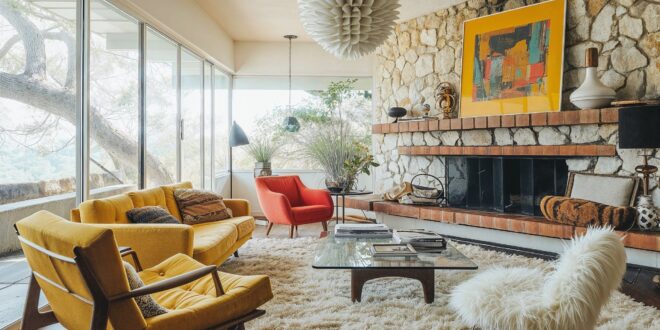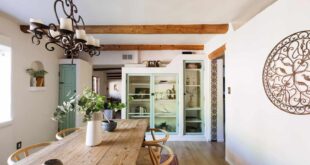
Mid-Century Modern: A Timeless Design Movement
Mid-century modern design, a style that emerged in the mid-20th century (roughly from the 1930s to the 1960s), continues to captivate designers and homeowners alike. Its clean lines, organic shapes, and emphasis on functionality make it a versatile and enduring aesthetic. This article delves into the history, characteristics, and enduring appeal of mid-century modern design.
The Roots of Mid-Century Modern
The mid-century modern movement was a reaction against the ornate and heavily decorated styles of the early 20th century. Influenced by Bauhaus principles and the International Style, designers sought to create furniture and architecture that were both beautiful and practical. The post-World War II era, with its technological advancements and optimistic outlook, further fueled the movement. New materials like plywood, plastic, and fiberglass allowed for innovative designs that were previously impossible.
Key Influences
- Bauhaus: Emphasized functional design and the integration of art, craft, and technology.
- International Style: Characterized by clean lines, geometric shapes, and the use of modern materials like steel and glass.
- Scandinavian Design: Focused on simplicity, natural materials, and functionality, often incorporating organic forms.
Characteristics of Mid-Century Modern Design
Several key characteristics define the mid-century modern aesthetic:
- Clean Lines: Furniture and architecture feature simple, uncluttered lines and geometric shapes.
- Organic Shapes: Rounded edges and flowing forms soften the overall look, creating a sense of balance and harmony.
- Functionality: Designs prioritize practicality and usability, with an emphasis on comfort and efficiency.
- Minimalism: A “less is more” approach, with a focus on essential elements and a rejection of unnecessary ornamentation.
- Use of Natural Materials: Wood, metal, glass, and leather are commonly used, often in their natural state.
- Bold Colors: A mix of muted tones and vibrant colors, such as avocado green, mustard yellow, and orange, adds visual interest.
Iconic Mid-Century Modern Designers
Numerous talented designers shaped the mid-century modern movement. Here are a few of the most influential:
- Charles and Ray Eames: Known for their innovative use of molded plywood and plastic, they created iconic chairs like the Eames Lounge Chair and the Eames Molded Plastic Chair.
- George Nelson: A prolific designer and director of design at Herman Miller, he created iconic pieces like the Nelson Platform Bench and the Ball Clock.
- Eero Saarinen: Famous for his organic and sculptural designs, including the Tulip Chair and the Womb Chair.
- Isamu Noguchi: A sculptor and designer known for his biomorphic forms and use of natural materials, he designed the Noguchi Coffee Table.
- Arne Jacobsen: A Danish architect and designer known for his functional and elegant designs, including the Egg Chair and the Swan Chair.
Mid-Century Modern Architecture
Mid-century modern architecture is characterized by its open floor plans, large windows, and integration with the surrounding landscape. Homes often feature flat or low-pitched roofs, clean lines, and a focus on natural light. Common materials include wood, glass, and concrete. [See also: Modern Home Design Trends] Eichler Homes, particularly in California, are prime examples of mid-century modern residential architecture.
Key Architectural Features
- Open Floor Plans: Create a sense of spaciousness and connectivity between living areas.
- Large Windows: Maximize natural light and offer views of the outdoors.
- Flat or Low-Pitched Roofs: Contribute to the clean, horizontal lines of the design.
- Integration with Nature: Blurring the lines between indoor and outdoor spaces through the use of patios, gardens, and natural materials.
The Enduring Appeal of Mid-Century Modern
Despite being decades old, mid-century modern design remains incredibly popular. Its timeless aesthetic, functionality, and versatility make it a perfect fit for modern lifestyles. The clean lines and minimalist approach create a sense of calm and order, while the use of natural materials and bold colors adds warmth and personality. Furthermore, the durability and quality craftsmanship of mid-century modern furniture ensure that it will last for generations.
Reasons for its Continued Popularity
- Timeless Aesthetic: The clean lines and simple forms of mid-century modern design never go out of style.
- Functionality: Designs prioritize practicality and usability, making them well-suited for modern living.
- Versatility: Mid-century modern furniture and architecture can be easily integrated into a variety of interior styles.
- Durability: High-quality materials and craftsmanship ensure that mid-century modern pieces will last for years to come.
- Nostalgia: For some, mid-century modern evokes a sense of nostalgia for a simpler time.
Incorporating Mid-Century Modern into Your Home
If you’re looking to incorporate mid-century modern design into your home, here are a few tips:
- Start with Key Pieces: Invest in a few iconic mid-century modern furniture pieces, such as an Eames Lounge Chair or a Noguchi Coffee Table.
- Use a Neutral Color Palette: Create a foundation of neutral colors, such as white, gray, and beige, and then add pops of color with accessories and artwork.
- Incorporate Natural Materials: Use wood, leather, and other natural materials to add warmth and texture to your space.
- Keep it Minimalist: Avoid clutter and unnecessary ornamentation. Focus on essential elements and create a sense of calm and order.
- Mix and Match: Don’t be afraid to mix mid-century modern pieces with other styles. The key is to create a cohesive and balanced look.
Where to Find Mid-Century Modern Furniture
Mid-century modern furniture can be found in a variety of places:
- Vintage Stores: Offer unique and authentic mid-century modern pieces.
- Antique Shops: Similar to vintage stores, but may carry higher-end or more rare items.
- Online Marketplaces: Sites like eBay, Etsy, and Chairish offer a wide selection of mid-century modern furniture.
- Modern Furniture Retailers: Many retailers specialize in modern furniture, including reproductions of classic mid-century modern designs.
- Auction Houses: Can be a good source for high-end or rare mid-century modern pieces.
The Future of Mid-Century Modern
Mid-century modern design shows no signs of fading away. Its timeless appeal and versatility ensure that it will continue to be a popular choice for designers and homeowners for many years to come. As we move towards more sustainable and eco-friendly design practices, the emphasis on functionality and natural materials that defines mid-century modern will become even more relevant. The principles of mid-century modern design – simplicity, functionality, and beauty – are as relevant today as they were in the mid-20th century. Its enduring influence can be seen in contemporary furniture design and architectural trends, solidifying its place as a truly timeless design movement. [See also: Sustainable Interior Design] The principles of good design are timeless, and mid-century modern exemplifies these principles perfectly.
 Nimila
Nimila




